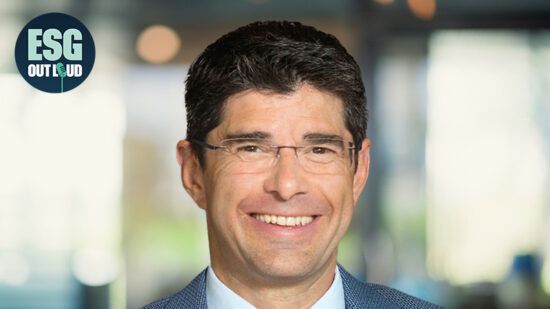The world is facing major economic and social crises, with severe disruptions to energy, food and finance systems. In a world under so much stress and strain, investors are looking for the next opportunity to support the long-term health of the global economy, while making strides toward a a cleaner and more just society.
PA Future spoke with Bogdan Gogulan, managing partner and CEO at NewSpace Capital – a growth-stage investor investing in infrastructure based in Earth’s orbit – to find out more about how satellite technology has become a crucial part of the global economy and the march toward net zero.
What opportunities are there in investing in space?
It’s important to understand that investing in space is not investing in just one industry, it runs across multiple industries. I think when people think about space and space investments, they think about asteroid mining and SpaceX, but that’s a very small part of the market, and the opportunities are actually very diverse – 99% of investment is focused on planet Earth, from communication to transportation and connectivity.
Space infrastructure is also becoming more efficient and cost-effective, with the launch price going down due to the miniaturisation of satellites, and we can do things from space faster, better and cheaper, so more industries are developing space components for their businesses. So, the opportunities are vast, both in early-stage and growth-stage companies, but also in mature and listed companies.
That also presents a challenge for us as an investor, because you look at such a large diversity of opportunities from day-to-day, and the technical expertise needed to evaluate opportunities in materials and artificial intelligence (AI), for example, are very different. However, we pride ourselves on having deep technical knowledge within our team so that we can conduct those evaluations properly.
How do you identify the companies that you want to invest in, and what makes a good investment for you?
Well, the macro thesis we adhere to is that space is interesting because it’s helping to solve every major challenge we face as a species: the climate crisis, the biodiversity crisis, the productivity crisis, the food crisis, the security crisis – I could go on. Many of the solutions overlap and address multiple of those crises, such as AI, which has applications in energy transition technology by also in security applications.
Secondly, we focus on the part of the market that has a high growth potential because of the high demand for specific products and services from the global economy – the parts that are driven by demand for products that solve fundamental challenges, not by infrastructure investment. So, we’re providing working capital to scale the operations, building up the business development team, increasing marketing, increasing business development and funding operational expenses, rather than doing venture capital stuff like building a factory or doing prototypes.
How can satellites and other infrastructure support the global decarbonisation journey?
We can track carbon emissions from space, and that’s evolved from only being able to do so on a global scale, down to being able to do that on a very localised basis. One of our portfolio companies, Kayrros, is managing to pinpoint that to a specific plant, specific factory or specific building, for example, and that brings auditable credibility and accountability. People doing a good job at transitioning to a clean business model can now prove it, and those who aren’t can be identified and encouraged to do the right thing.
On the infrastructure side of things, if you think about wind power and solar generation, weather prediction is really important, and more precise weather prediction can come from satellites in space. At the same time, when people are looking at financing for solar plants, for example, they want to have third-party validation of what’s happening with the construction of these projects, and that happens using Earth observation images of those construction sites. Additionally, if you think about the energy efficiency of transportation, satellites can help optimise route planning and save carbon emissions that way.
Going into the more esoteric stuff, we can bring energy-hungry infrastructure into space, and power it by harnessing solar energy in orbit. For example, data centres and cloud storage are very energy-intensive because it takes an enormous amount of energy to cool them down. In space, it’s already cold, so the environment effectively helps you to maintain a certain temperature without having to consume energy to do so.
What are the potential risks an investor faces when investing in space?
The same general risks that you’d find on the ground are there, like supply chain constraints, which we saw resulting from the Covid-19 pandemic. It affected not only car manufacturing or other industries that require electronic components but also the space industry as well. And then there are also funding risks based on economic activity and fluctuation in the funding from government programmes.
However, people often ask me about space-specific risks associated with the physical environment where the infrastructure operates, such as solar radiation, extreme temperatures and working at very high velocities, for example. Another space-specific threat are solar superstorms. Even when they happen, though, they happen every 100 to 200 years, and when one does happen, it will impact the electronics on the surface of the ground too, not just those in space. Besides, in theory, space infrastructure has been tested for exposure to the sun’s rays and should be well insulated against a solar storm – more so than ground infrastructure anyway.
Do you think it’s more difficult for a generalist investor to invest in space?
I think a lot of generalist investors have tried to invest in space, but few have been successful, and I think the reason for that is that it’s more like investing in biotech rather than your average technology investments. Some generalist investors make the mistake of thinking that, because they’ve invested in tech before, space tech shouldn’t be too different. But it’s more like biotech because it requires a very particular, very deep technical knowledge on the subject, and how many generalist investors have been successful in biotech? Not many.
Right now, there’s a host of early-stage investors purely focused on space. We’re probably still the only ones focused on the growth stage. Then several specialised and generalist investors have partners or certain parts of an organisation focused on space, usually approaching it from the aerospace defence perspective.
What could be the impact of geopolitical tensions on investing in space?
I think as far as the geopolitical situation is concerned, we see a very strong tailwind for the industry with increased spending because people are realising just how important special infrastructure is – it’s not just a ‘nice to have’ anymore, it’s absolutely critical.
In terms of how secure the infrastructure is, I think what people are perhaps concerned about right now is something like a missile attack on the satellite infrastructure. But what we have to remember is that, if anyone does that, it wouldn’t just knock out a specific satellite or cluster of satellites, it would affect the entire orbit. You’d have to wait for up to 10 years for the debris to clear so that we can start using space again, and I don’t think that’s in anyone’s interest because of how dependent the global economy is on space infrastructure. I suppose, never say never. But right now, these security concerns are fuelling technical development, and, as I said earlier, fuelling the industry.
Are there any concerns about dealing with space debris at all?
If you combine all of the space debris in the Earth’s orbit and pack it together, you’ll get about 40 20-foot containers, which isn’t that much when you compare that to the 11,000 20-foot containers lost on shipping lines every year. Of course, the real challenge is if we don’t do anything about it, there can be a build-up of it. But there is a lot of investment in tech that can help address that already, alongside regulatory efforts to force companies to mitigate the space debris risk – for example, making sure satellites have engines so they can manoeuvre and, eventually, de-orbit the satellite at the end of the lifecycle. So, while yes, it is a risk, it’s an understood risk, and one that people are already working on. I wouldn’t over-emphasise it.
How do you see investment in space evolving, and what will be the factors that lead us there?
Space investment is not all that different from any other investment area, as it can be affected by interest rates, global liquidity, regulatory frameworks and political risks.
There’s also the question of capital formation, with the availability of growth capital being critical. Historically, there’s been a complete lack of growth capital, and compounding the issue is the fact that there are now more early-stage companies going to the growth stage, and therefore the requirement for growth capital is much higher than it has historically been. That’s something we’re looking to address. Of course, it’s going to take more than one growth capital investor to tackle this problem, but you need to start somewhere.








